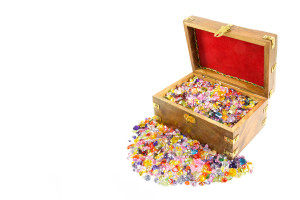Blog Simply and Carry a Big Stick
 “The canonical rule of thumb for scientists speaking to nonscientists is to talk as if you were speaking to eighth graders, because a lay audience often has a basic, and certainly not specialized, understanding of science,“ advises climate scientist Ilissa Ocko. “If you want the information to resonate with the non-scientist audience, you have to strip down to the essentials, craft a story, provide big-picture context, and consider using analogies,” she adds.
“The canonical rule of thumb for scientists speaking to nonscientists is to talk as if you were speaking to eighth graders, because a lay audience often has a basic, and certainly not specialized, understanding of science,“ advises climate scientist Ilissa Ocko. “If you want the information to resonate with the non-scientist audience, you have to strip down to the essentials, craft a story, provide big-picture context, and consider using analogies,” she adds.
Matching our writing to our intended audience is part of the challenge we business blog content writers face. After all, we’re not in this to entertain ourselves – we’re out to retain the clients and customers we serve and bring in new ones, so we try to use words and sentences to which our target readers can relate. We may even use a readability calculator such as the Flesch-Kinkaid.
But what Ocko argues is that even when we are speaking to (or, in our case, writing to) industry partners or more sophisticated and knowledgeable readers, we will be more effective if we simplify.
She names three reasons why knowledge transfer will be more successful even when there is a “high-level”, knowledgeable audience:
- Even in a room full of scientists, not everyone has the same background and expertise.
- The audience (our readers) has only a small chunk of time to digest the information (this is particularly true with blogs).
- People are distracted by life. The more complex the talk (read “blog post”), the easier it is to mentally check out. Speaker acknowledgement of this audience inadequacy through simpler messaging and slides will be a win-win for all.
Less is more, Ocko teaches scientific speakers. Use less jargon, less math, less text. Use more graphics, more analogies, more stories. As a corporate blog writing trainer, I couldn’t agree more with every one of those points. Our writing style should be clear and simple, direct, and easily understandable.
Writing simply will add big-stick impact to your business blog content!



 my Say It For You blog readers. The concept is to help blog content writers continually come up with fresh content to educate, inform, and entertain readers (and at least indirectly, get the “cash register” to ring). Tidbits, I explain at corporate blogging training sessions, can be used in business blogs in a variety of ways, including:
my Say It For You blog readers. The concept is to help blog content writers continually come up with fresh content to educate, inform, and entertain readers (and at least indirectly, get the “cash register” to ring). Tidbits, I explain at corporate blogging training sessions, can be used in business blogs in a variety of ways, including: For freelance blog content writers, the tidbit “bin” turns into a treasure chest. If you’re working on a business blog and you can include interesting information most readers don’t know, that’s gold. Even if such information appears useless on the surface, if we get creative, we can put it to very good use in adding interest to our blog. One of my favorite sources for tidbit “ore” is
For freelance blog content writers, the tidbit “bin” turns into a treasure chest. If you’re working on a business blog and you can include interesting information most readers don’t know, that’s gold. Even if such information appears useless on the surface, if we get creative, we can put it to very good use in adding interest to our blog. One of my favorite sources for tidbit “ore” is
Follow us online!